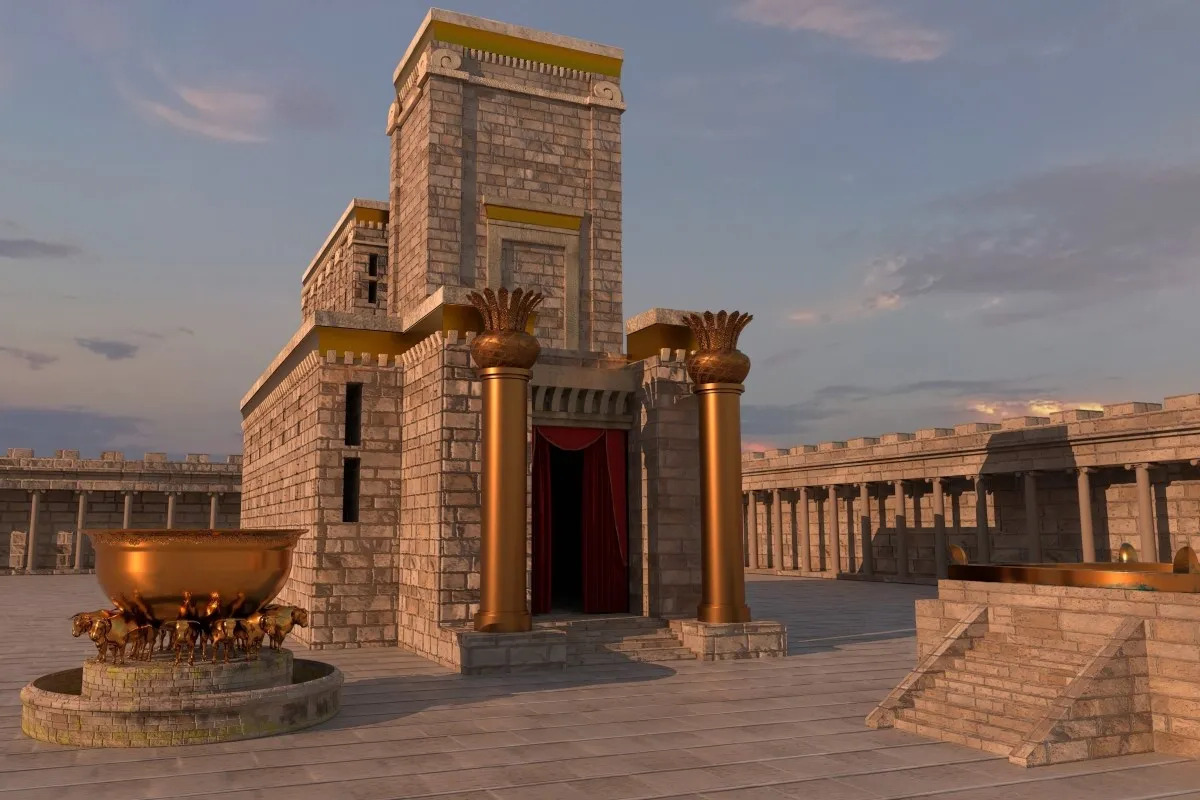
Ever wondered about the grandeur of Solomon's Temple, a marvel of ancient architecture and a centerpiece of Jewish worship? Solomon's Temple, also known as the First Temple, has fascinated historians, architects, and the faithful for centuries. Its construction, ordered by King Solomon around the 10th century BCE, was not just an architectural feat but also a symbol of a united Israelite kingdom. But what makes this ancient structure so intriguing? From its lavish materials to the Ark of the Covenant's mysterious disappearance, the temple holds secrets and stories that have captivated people's imaginations for millennia. Ready to uncover some jaw-dropping facts about this historical masterpiece? Let's dive into the world of ancient wonders and discover what made Solomon's Temple a site to behold.
Key Takeaways:
- Solomon's Temple was a magnificent structure built by King Solomon to house the Ark of the Covenant. It symbolized the strength and unity of the Israelite kingdom and influenced religious architecture for centuries.
- The temple's destruction marked a turning point in Jewish history, leading to the Babylonian Exile. Its legacy lives on in cultural, religious, and mysterious aspects, captivating the imagination of scholars and religious followers.
What Was Solomon's Temple?
Solomon's Temple, also known as the First Temple, was a magnificent structure built in ancient Jerusalem. King Solomon, son of David, constructed this temple to house the Ark of the Covenant, which contained the original tablets of the Ten Commandments. This temple not only served as a religious center but also symbolized the strength and unity of the Israelite kingdom.
Key Features of Solomon's Temple
-
Construction: Solomon's Temple was constructed around the 10th century BCE. It took seven years to complete, showcasing the dedication and resources invested in this monumental project.
-
Design: The temple's design was inspired by Tyrian temples, reflecting a significant Phoenician influence. Its intricate details and lavish materials, including cedar from Lebanon and gold from Ophir, emphasized its splendor.
-
Purpose: Beyond being a house of worship, the temple acted as a central place for administering the laws of the land and a treasury for the nation's wealth.
The Ark of the Covenant's Role
-
Sacred Chamber: The most sacred part of Solomon's Temple was the Holy of Holies, a chamber designed to house the Ark of the Covenant. Only the high priest could enter this area, and only once a year, on Yom Kippur, to offer sacrifices and prayers for the people.
-
Symbolism: The presence of the Ark within the temple symbolized God's covenant with the Israelites, serving as a constant reminder of their special relationship.
The Temple's Destruction and Legacy
-
Destruction: In 586 BCE, the Babylonians, led by King Nebuchadnezzar II, destroyed Solomon's Temple. This event marked a significant turning point in Jewish history, leading to the Babylonian Exile.
-
Reconstruction Efforts: Despite its destruction, the temple's legacy lived on. It was rebuilt approximately 70 years later, known as the Second Temple, although it never matched the original's grandeur.
-
Archaeological Evidence: Limited archaeological evidence exists regarding Solomon's Temple due to religious sensitivities and political tensions in Jerusalem. However, textual sources like the Hebrew Bible provide detailed descriptions of its design and significance.
Cultural and Religious Impact
-
Influence on Architecture: Solomon's Temple influenced religious architecture for centuries, inspiring the design of synagogues and churches around the world.
-
Spiritual Significance: For Jews, the temple remains a symbol of their ancient sovereignty and religious devotion. Its memory is commemorated during festivals like Hanukkah and Tisha B'Av.
-
In Literature and Art: The temple has been a source of inspiration in various forms of literature and art, symbolizing themes of faith, loss, and restoration.
Mysteries and Theories
-
The Temple's Treasures: Legends abound about the treasures that were housed in Solomon's Temple, including the Ark of the Covenant. Some believe these treasures were hidden to protect them from the Babylonian invaders.
-
Theories of Relocation: There are numerous theories about the Ark's current location, with some suggesting it was taken to Ethiopia, while others believe it remains hidden beneath the Temple Mount.
-
Freemasonry and the Temple: Solomon's Temple holds a significant place in Freemasonry, where it symbolizes moral and spiritual lessons. Freemasons often use the temple's construction as an allegory for personal development and enlightenment.
-
Enduring Mystery: Despite extensive historical and archaeological research, many aspects of Solomon's Temple remain shrouded in mystery, captivating the imagination of scholars, religious followers, and conspiracy theorists alike.
A Final Glimpse at Solomon's Marvel
Solomon's Temple, a marvel of ancient architecture and spiritual significance, has fascinated historians, archaeologists, and believers alike for centuries. From its grandeur and the meticulous craftsmanship to the profound religious practices it housed, this temple wasn't just a building. It was a symbol of faith, unity, and divine presence in the heart of Jerusalem. As we've journeyed through the captivating facts surrounding its construction, destruction, and the lasting legacy it leaves behind, it's clear that Solomon's Temple transcends mere historical curiosity. It embodies the rich tapestry of human belief, ingenuity, and the quest for connection with something greater than ourselves. Whether you're drawn to its architectural wonders or the spiritual mysteries it holds, Solomon's Temple remains an enduring testament to the complexities and aspirations of ancient societies.
Frequently Asked Questions
Was this page helpful?
Our commitment to delivering trustworthy and engaging content is at the heart of what we do. Each fact on our site is contributed by real users like you, bringing a wealth of diverse insights and information. To ensure the highest standards of accuracy and reliability, our dedicated editors meticulously review each submission. This process guarantees that the facts we share are not only fascinating but also credible. Trust in our commitment to quality and authenticity as you explore and learn with us.
